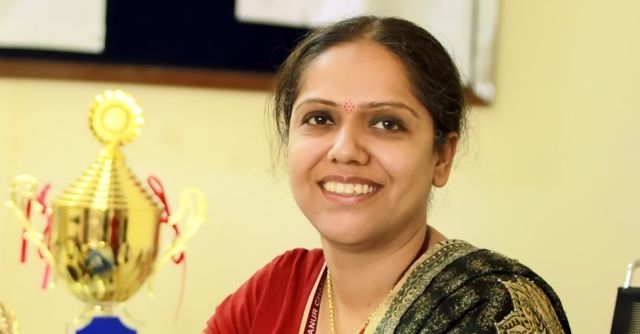
How GenAI and robotics can help India achieve net zero


India, as one of the world's most populous and rapidly developing countries, significantly impacts global warming and climate change due to its greenhouse gas (GHG) emissions and pollution. Coal-fired thermal power plants, rice paddies, rapid urbanization, transportation, and industrial activities are key contributors to India’s emissions. These factors make India the third-largest emitter of GHGs globally, after China and the United States. India's energy sector emissions constitute a substantial portion of its own GHG profile, highlighting the critical need to transition to cleaner energy sources and sustainable development pathways.
Achieving net zero emissions (i.e. a state where the total GHG emissions released into the atmosphere are balanced by the amount removed) is a cornerstone in the fight against climate change. This balance ensures that human activities no longer contribute to a net increase in global warming, helping to stabilize the climate and mitigate its adverse effects. Net zero is not merely about reducing emissions; it represents a comprehensive transformation toward sustainability. It entails SAP (Shifting, Promoting and Adopting green technologies), such as smart grid, energy-efficient systems and electric vehicles. Achieving net zero emissions is a significant goal for India, as the country balances economic growth with sustainability. Artificial Intelligence (AI) and robotics can play transformative roles in this journey by optimizing energy use, enabling sustainable practices and accelerating innovations.

AI and Robotics have transformative potential in the energy sector (from generation to transmission and distribution), agriculture, transportation and industry sectors. Their integration can significantly enhance efficiency, reliability, sustainability, and cost-effectiveness and limit to CO2 emissions. Here’s how:
AI and Robotics in Energy Generation: AI and robotics will improve power generation by optimizing performance, predictive maintenance, and integrating renewable energy sources. AI algorithms will analyze data from sensors in power plants to predict equipment failures, reducing downtime and maintenance costs. Machine learning models will optimize fuel usage in thermal plants and improve the efficiency of renewable energy sources like wind and solar. AI will also forecast weather patterns for better scheduling and dispatch of solar and wind energy, addressing their variability. AI will predict energy demand patterns, ensuring the right amount of generation, reducing wastage and balancing the grid.
Robots perform maintenance in hazardous environments, such as nuclear plants or offshore wind turbines. Autonomous robots clean large-scale solar farms, maximizing energy output. Drones and climbing robots inspect and repair wind turbines, reducing the need for human intervention.

AI and Robotics in Energy Transmission: AI and robotics will enhance grid management, fault detection, and energy flow in the transmission sector. AI systems will detect and respond to fluctuations in voltage or frequency, ensuring stable energy transmission. AI-powered systems will detect and mitigate cyber threats in the transmission network. Drones/ robots will inspect transmission lines, identifying damage, and wear without requiring human crews. Mobile robots equipped with sensors will monitor transmission infrastructure for anomalies.
AI and Robotics in Energy Distribution: AI and robotics in the distribution sector will focus on smart grids, customer interaction, and efficient delivery of energy. AI will enable demand-response systems, adjusting energy distribution based on real-time demand, it will also balance supply from distributed energy resources like rooftop solar panels. Furthermore, AI chatbots will assist with billing, consumption insights and outage updates. Robots will inspect and repair underground cables, minimizing excavation and disruptions. Autonomous robots restore services in disaster-affected areas by repairing or rerouting energy supply. Robotic systems can automate the installation and maintenance of smart meters at customer premises.
AI and Robotics in Sustainable Agriculture: AI models can analyze weather, soil, and crop data to suggest efficient irrigation and fertilization, reducing emissions from excessive water and chemical use. Autonomous robots can plant, monitor and harvest crops with minimal waste, reducing emissions from traditional farming practices.

AI and Robotics in Transportation: AI can design energy-efficient cities with optimized transport networks, waste management systems and green spaces. AI models can suggest real-time adjustments to reduce traffic congestion and vehicular emissions. Robots can build structures using sustainable materials, reducing waste and enhancing efficiency. AI-powered robots can sort, recycle, and manage waste effectively, minimizing landfill emissions.
By harnessing the power of generative AI and robotics, India can accelerate its path to net zero while fostering economic growth and innovation. But, implementing AI and robotics to transform the energy, agriculture, transportation and industry sectors faces several challenges. The major challenges are existing infrastructure of each mentioned sector may not support the deployment of advanced AI and robotic systems due to outdated systems. High costs will be involved for upgrading power grids and other facilities. The deployment of AI and robotics in India's rural energy sector faces challenges that stem from infrastructural, technological, and human resource gaps. Last but not least, enact policies that incentivize the adoption of AI and robotics, such as tax breaks or subsidies for renewable energy projects integrated with advanced technologies will have to be implemented. The deployment of AI and robotics, particularly in critical sectors like energy, industry will require robust ethical guidelines to ensure their usage aligns with principles of transparency, accountability and sustainability.

Inderpreet Kaur
Inderpreet Kaur is Senior Member of IEEE.
